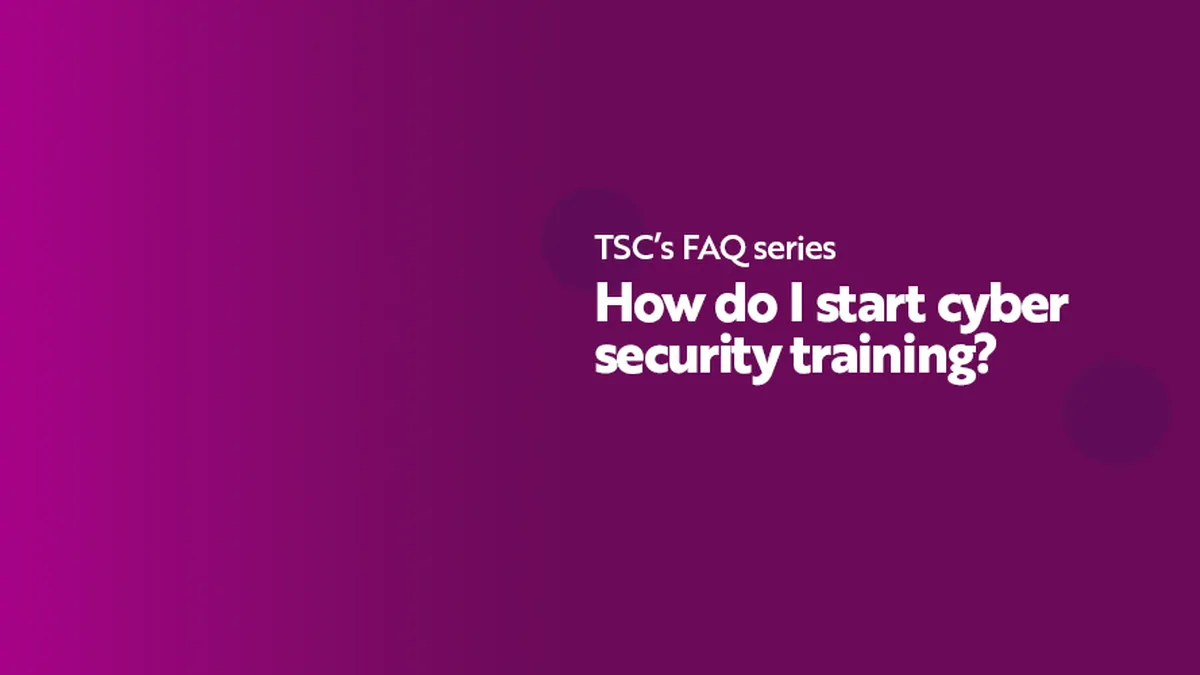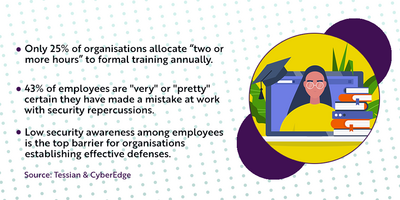
- Employee awareness
- 3 min read


As a newly appointed CISO, DPO or CIO, establishing a robust cyber security training program is not only your remit but also a vital step towards protecting your organisation's sensitive data and systems.
Effective training equips employees with the knowledge and skills to identify and mitigate cyber threats.
In this blog post, we will provide a comprehensive guide on how to initiate a successful cyber security training program that aligns with your organisation's needs and promotes a strong security culture.
Begin by conducting a thorough assessment of your organisation's current cyber security posture and training requirements. Identify the key areas where employees may lack sufficient knowledge or awareness. Consider factors such as industry regulations, specific compliance requirements, and the types of data your organisation handles. This evaluation will help you determine the scope and focus of your training program. It will also help you to save time and effort with resources only going to where it is needed. TSC's SABR (Security Awareness and Behaviour Research) tool is a brilliant starting point to assess and survey behaviours in your organisation.
Establish clear and measurable training objectives that align with your organisation's overall cyber security goals. These objectives may include enhancing employee awareness of phishing attacks, promoting secure password practices, or reinforcing data protection protocols. By defining your objectives, you can tailor the training program to address specific vulnerabilities and align with your organisation's risk appetite.
Craft engaging and interactive training content that educates and empowers employees. Utilise a variety of training methods, such as videos, e-learning modules, quizzes, games, simulations, and more, to cater to different learning styles. Ensure that the content is easy to understand, concise, and provides practical examples relevant to your organisation and to the employee’s role. Engaging visuals, real-world examples, and relatable anecdotes can help capture employees' attention and make the training more effective and retainable.
Consider implementing a phased approach when rolling out your training program. Start with foundational cyber security awareness training for all employees to establish a baseline understanding of key concepts and best practices. Then, progressively introduce more specialised training based on employees' roles and responsibilities. This approach allows you to address the unique security challenges faced by different departments while ensuring comprehensive coverage across the organisation.
Leverage the knowledge and expertise within your organisation to support your training efforts. Engage your IT team, security professionals, and subject matter experts to contribute to training materials and deliver specialised sessions. Additionally, consider partnering with external cyber security training providers who can offer industry insights, certifications, and up-to-date resources to enhance your program's effectiveness.
Promote a security-conscious culture by encouraging open communication, reporting of security incidents, and continuous learning. Emphasise the importance of cyber security in all internal communications and highlight success stories where employees have thwarted potential threats. Regularly reinforce training concepts through reminders, newsletters, and gamification techniques to keep cyber security at the forefront of employees' minds. By fostering a culture that values security, you can create an environment where employees actively contribute to the organisation's overall cyber defence.
Establish metrics and evaluation mechanisms to measure the effectiveness of your training program. Monitor the number of reported incidents, employee feedback, and engagement with training materials. Conduct periodic assessments or simulated phishing exercises to evaluate employees' knowledge and readiness. Use these insights to refine your training content, delivery methods, and address any identified gaps. Regular evaluation ensures that your training program evolves to keep pace with emerging threats and aligns with the changing needs of your organisation.
Establishing a robust cyber security training program is essential for newly appointed CISOs, DPOs, and CIOs to protect their organisation's sensitive data and systems. By following the steps outlined in this blog post, you can initiate a successful training program that aligns with your organisation's needs and promotes a strong security culture.
If you would like more information about how The Security Company can help you set up security induction training or how we deliver engaging and effective cyber security awareness materials ... please contact our Head of Business Development and Sales, Jenny Mandley.
The Security Company's vast library of customised and non-customised products and services are tailored for small, medium and large organisations and are available in a variety of languages. We also offer bespoke solutions for organisations that desire training and awareness materials built from the ground up.



© The Security Company (International) Limited 2025
Office One, 1 Coldbath Square, London, EC1R 5HL, UK
Company registration No: 3703393
VAT No: 385 8337 51


